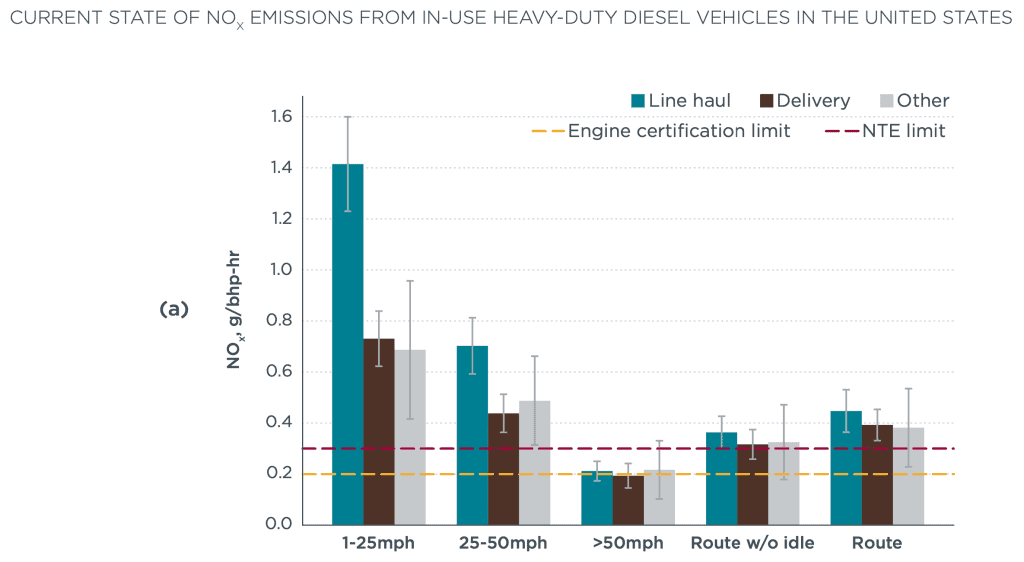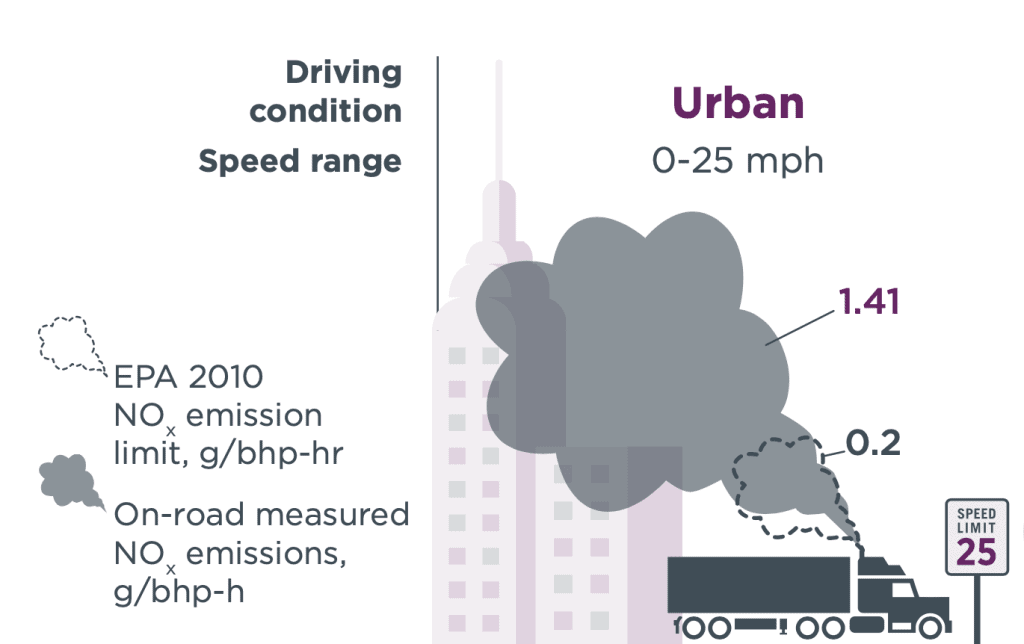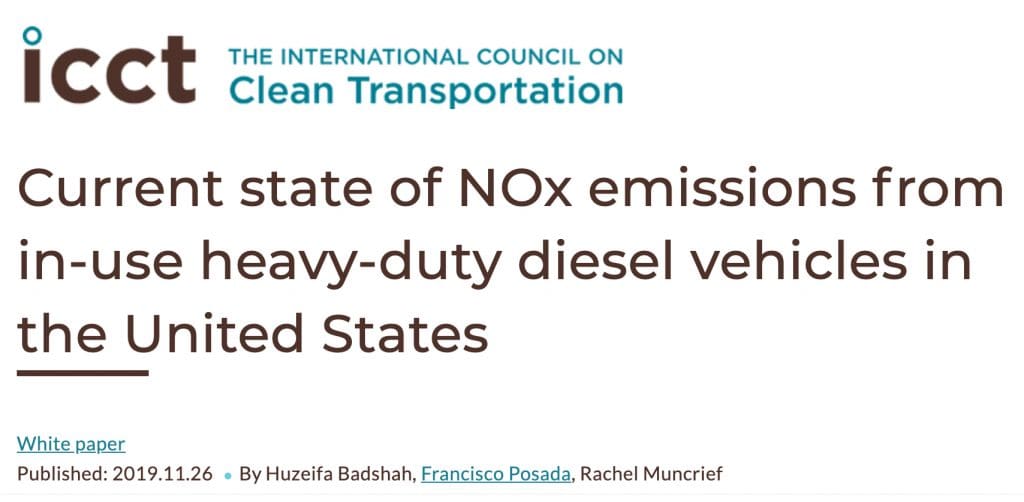Study shows that emissions control equipment doesn’t work properly at low speeds.
The recent white paper “Current state of NOx emissions from in-use heavy-duty diesel vehicles in the United States” from the International Council on Clean Transportation (ICCT), confirms what fleets have known for years: diesel emissions control technology performs very poorly in low-speed conditions. Although terminal trucks (aka yard trucks, hostlers, spotters, yard dogs, etc.) were not included in the study, they fall squarely in the highest-emitting duty cycle. Yard trucks generally operate at speeds under 25 mph (and often 10-15 mph) where diesel engine temperatures do not reach levels required for optimal performance of emissions control systems.
What’s the upshot for yard truck fleets? If you’re operating diesels, you’re likely emitting far more than you think, and above legal limits.
This report shares data from emissions tests conducted in real-world operating conditions. The findings are dramatic. From the study:

“Vehicle operation at speeds of less than 25 mph results in NOx emissions of more than five times the certification limit for the average heavy-duty vehicle in the study.”

“Line-haul trucks…have the highest average NOx emissions at less than highway speeds. Their average NOx emissions of 1.41 g/bhp-hr are more than 7 times the engine certification limit in urban driving…. A single line-haul truck emits the NOx equivalent of 100 cars for each mile driven in urban driving.” It is noted that these trucks are optimized for highway driving.
The bottom line: Fleets deploying Orange EV pure-electric terminal trucks can breathe even easier with trucks that are safer, cooler, smoother quieter, and a whole lot cleaner than their diesel counterparts. Orange EV zero-emission terminal trucks eliminate emissions and related liability.
Read the white paper:


